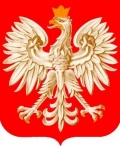Alwernia: Difference between revisions
Knorrepoes (talk | contribs) m (Text replacement - "{{media}} Literature :" to "Literature : {{media}}") |
Knorrepoes (talk | contribs) m (Text replacement - "Literature :" to "'''Literature''':") |
||
| Line 24: | Line 24: | ||
The arms of Alwernia displays a tower of the convent church, which is the focal point of the town and a letter "A" for "Alwernia", alongside with two spruce trees to mark forests around the little town. All the elements are white(or silver)/black against the red background. | The arms of Alwernia displays a tower of the convent church, which is the focal point of the town and a letter "A" for "Alwernia", alongside with two spruce trees to mark forests around the little town. All the elements are white(or silver)/black against the red background. | ||
[[Literature]] : | '''[[Literature]]''': | ||
{{media}} Image and meaning obtained from Robert Weymann and Mariusz Pazdziora | {{media}} Image and meaning obtained from Robert Weymann and Mariusz Pazdziora | ||
Revision as of 07:35, 9 September 2022
Poland heraldry portal
This page is part of the Poland heraldry portal |
Heraldry of the World |
|
Civic heraldry:
|
Other heraldry: |
ALWERNIA
Province: Małopolska
County: Chrzanów
Origin/meaning
Originally the present town of Alwernia was founded around a Bernadine convent called Alwernia after its counterpart Alverno in Tuscany. The convent was founded in the early 17th century by Krzysztof Korycinski, the royal secretary of the King of Poland and Sweden, Sigismund III Vasa. During his visit to Italy, the royal secretary was much impressed by Alverno and decided to built a similar convent in Poland.
The arms of Alwernia displays a tower of the convent church, which is the focal point of the town and a letter "A" for "Alwernia", alongside with two spruce trees to mark forests around the little town. All the elements are white(or silver)/black against the red background.
Contact and Support
Partners:
Your logo here ?
Contact us
© since 1995, Heraldry of the World, Ralf Hartemink 
Index of the site Image and meaning obtained from Robert Weymann and Mariusz Pazdziora












